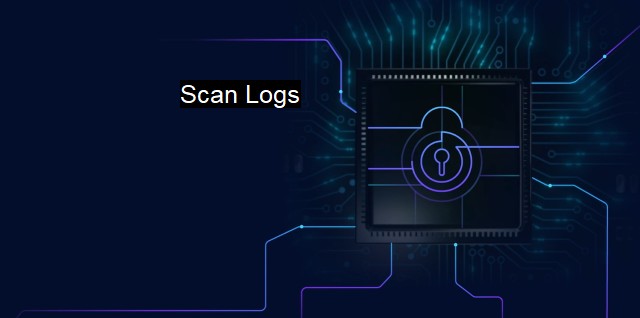What are Scan Logs?
Understanding the Importance of Scan Logs in Cybersecurity to Protect Your Computer Systems
Scan logs, within the context of cybersecurity and antivirus strategies, play a critical role in tracking, diagnifying, solving and largely preventing various kinds of cyber threats. They could be considered as detailed records or digital journals, where all security scans of an antivirus software are thoroughly documented. Every time a cybersecurity solution or an antivirus software scans a system for potential threats, its activities are automatically recorded in these scan logs for future references and analyses.Maintaining detailed scan logs can prove crucial to identifying prevalent security threats, recognizing patterns and trends, keeping firmware up-to-date regularly, and refining prevailing security measures successfully. in case of a security breach or system compromise, scan logs can serve as essential raw material for cyber forensic investigators, allowing penetration testers, cybersecurity experts, and incident response teams to better understand the specificities of an attack, thus enabling them to devise suitably-targeted responses for mitigating the potential damage.
Scan logs can provide insight into various aspects of a security scan. They can show what files were positively or negatively scanned, what type of test was performed, the status or after-effects of such tests, the amount of data processed, masked, or sanitized, where potential malware resides, or if there were any unresolved vulnerabilities on the system at the time of augury. They shed light on both - tampering of data and underutilization of system resources, even giving clarity on as essential data as response times.
These logs capture not only security threats that have been successfully inoculated or eliminated but also credible threats that have not been removed for technical reasons or through programmatic oversights. In certain cases, scan logs will also include a timestamp and a unique identifier for each security scan, which provides detailed tracking of each incident and simplifies the process of traceability credibly.
While scan logs provide a plethora of information, the extensive volume of data can also present a challenge in retrieving meaningful information from these logs. Thus, tools and approaches such as log management tools, log analyzers, and Security Information and Event Management (SIEM) systems come into the cybersecurity continuum. These can help categorize, filter, sort out irrelevant data and analyze the logs originated from systems, applications, and network devices effectually. Here, machine learning algorithms and artificial intelligence can also be included to identify threats and anomalies faster and more accurately.
Consecutively, IT administrators, security teams, and apportioned cyber-crime investigators can better understand the system's vulnerabilities, potential loops in their software, unexpected behavioral patterns, impose preemptive security measures, or short, medium, and long term security agendas for their infrastructures. It helps them strategize optimized incident handling features, mitigate passive cyber risk management failures, though in many cases, proactive risk management silhouettes.
Scan logs are inseparable components of the cybersecurity ecosystem. By providing valuable information about potential threats, the prevalence of vulnerabilities, the impact of sanctions, and subtly empowering strategic cyber management criteria to control potential threats well in advance, They act as pillars for creating, testing, implementing, and improving resilient cybersecurity strategies. Without an effective system for storing and analyzing these logs, identifying weak links in cybersecurity solutions, combating the most contemporary cyber issues, and tracing a path back to an attacker or a particular data component originating credible threats, would all become excessively onerous, if not impossible missions. Cybersecurity handles sensitive, precious data; scan logs indeed make this task more comprehensible.

Scan Logs FAQs
What are scan logs in cybersecurity and antivirus?
Scan logs in cybersecurity and antivirus refer to the records that contain information about scanning processes, detected threats, and system activities during the scan. The logs document the date and time of the scan, what was scanned, and what was identified as suspicious or infected.Why are scan logs important in cybersecurity and antivirus?
Scan logs are essential for cybersecurity and antivirus because they provide valuable insight into the security status of a system. They help security professionals track down and analyze security events, investigate potential threats, and develop more effective security strategies.How long should organizations retain scan logs for cybersecurity and antivirus?
Organizations should retain their antivirus scan logs as per their internal security policy or industry-specific regulations. Some laws and regulations require organizations to keep logs for a certain period, ranging from weeks to months or even years. Retaining logs can be useful in meeting compliance requirements, investigations, or litigation.What are the challenges faced when collecting and analyzing scan logs in cybersecurity and antivirus?
Collecting and analyzing scan logs can be challenging due to the enormous amount of data generated during the scanning process. Security professionals need to identify the relevant information from the logs and separate it from noise. They also need to ensure that the logs are accurate, complete, and trustworthy, as malicious actors can tamper with the logs to conceal their activities. Adopting automated log management tools can help organizations to efficiently collect, analyze, and store logs securely.| | A | | | B | | | C | | | D | | | E | | | F | | | G | | | H | | | I | | | J | | | K | | | L | | | M | |
| | N | | | O | | | P | | | Q | | | R | | | S | | | T | | | U | | | V | | | W | | | X | | | Y | | | Z | |
| | 1 | | | 2 | | | 3 | | | 4 | | | 7 | | | 8 | | |||||||